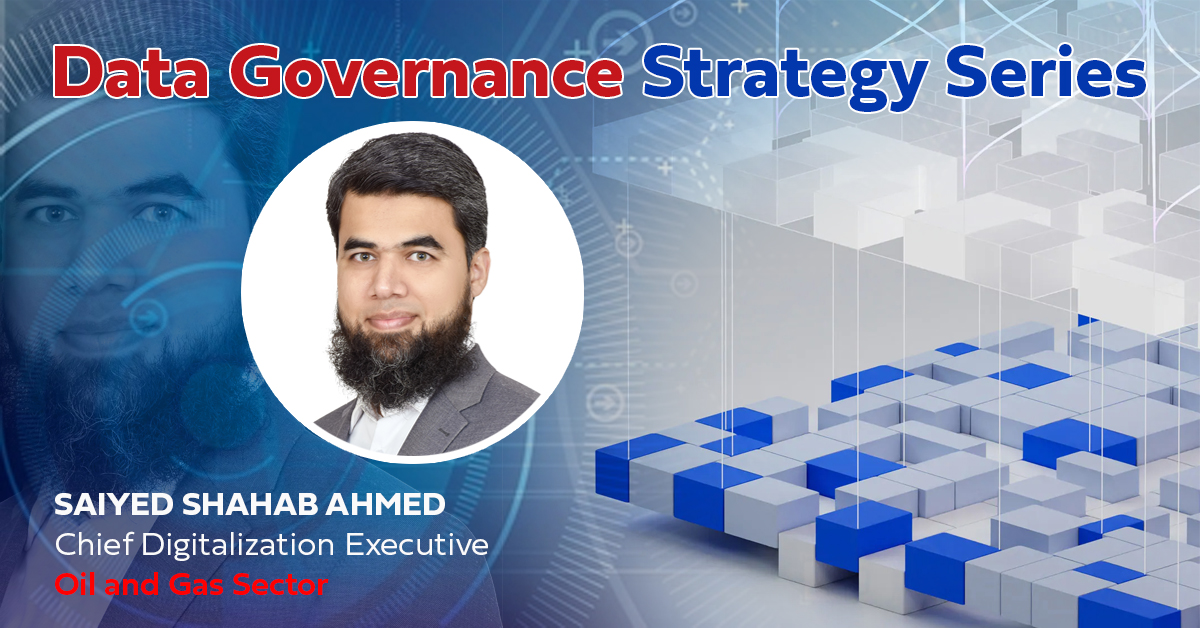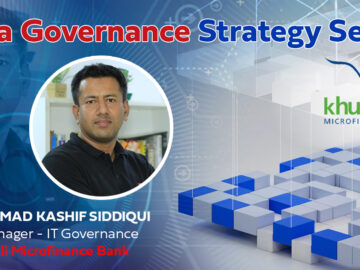
Saiyed Shahab Ahmed, Chief Digitalization Officer, Oil & Gas Sector, discusses the various aspects of data management and what are the right steps to ensure a successful business model and how making informed decisions with the help of data can give organizations a competitive advantage.
Q. How crucial is setting up a data strategy for the growth of an organization? And how are you using data to accelerate performance?
A. The volume of data is increasing exponentially at most companies and so is the number of technology solutions promising to revolutionize the way you manage or analyze your data. Without a data strategy, you can easily get distracted building dashboards for every data set or chasing shiny new software you don’t need or aren’t ready for. Even worse, you’re likely to ignore root causes and fundamental issues in favor of point solutions and quick fixes. A good enterprise data strategy, however, gives you clear goals and concrete actions and helps you ruthlessly prioritize initiatives with the most value to your business. Armed with your strategy, you avoid distractions, stay on track, and focus on correcting the root causes of your problems.
Q. What are the key steps in selecting and implementing the right technology for data integration and making informed decisions?
A. Data integration techniques have evolved over the years from manual to automated solutions. Depending on the varying business needs, the process of integrating data from disparate sources can be implemented using any of these approaches.
1. Manual The manual data integration technique involves a user manually collecting data from disparate source systems, applying quality rules to clean it, and uploading it to the target databases. It also involves hand-coding for every new use case to ease the mapping of datasets.
2. Middleware In middleware software, a virtual “pipeline” is created between multiple systems that allow bi-directional communication. This connectivity streamlines integration tasks.
3. Data virtualization/Data federation Data virtualization takes a completely different approach from physically moving data to and from databases. In this process, data virtualization tools do not move data across the systems—instead, an abstraction layer provides a unified view of the disparate systems, leaving the data exactly where it is physically. Data analysts can then request information through the virtual layer, which contains the metadata to access the sources. This process allows businesses to get real-time access to their data without exposing the technical details of the source systems, and quickly make enterprise-wide changes on the virtual layer instead of first consolidating the data in one place or implementing changes at each source separately. This integration approach does not support bulk data movement, although it can run alongside ETL or ELT processes.
4. Data warehouse/physical data integration This technique includes the use of top cloud based ETL tools for moving data from the source system to a data warehouse integration layer or other physical destination like a data lake. Businesses prefer this process due to the ease and flexibility in storing, viewing, and managing all their data in a centralized location. With the rapidly advancing technology, organizations are rapidly shifting their databases to the cloud, giving rise to cloud-based integration tools.
Q. How can you identify privacy, security, and governance risks when it comes to data security? And how to handle such risks?
A. To manage mentioned risk more effectively, you must identify risk exposure. You can do it by, Assess, plan, design and implement an overall risk-management and compliance process.
Be vigilant about new and evolving threats, and upgrade security systems to counteract and prevent them. Leverage high-quality, integrated data and systems to manage organizational risk.
Maintain adequate business service levels while adhering to all internal and external security requirements.
We can protect our organization from such risks via:
– Take inventory of all sensitive data.
– Classify sensitive data.
– Monitor access to sensitive data.
– Focus on employee training.
– Encrypt your sensitive data.
– Use endpoint security systems to protect data from unauthorized access.
– Use multi-factor authentication where possible
– Create a sensitive data protection policy for remote workers.
Q. How Machine Learning and Cloud are making it easier for companies to adapt to new challenges?
A. The top cloud computing platforms are all betting big on democratizing artificial intelligence. Over the past three years, Amazon, Google, and Microsoft have made significant investments in artificial intelligence (AI) and machine learning, from rolling out new services to carrying out major reorganizations that place AI strategically in their organizational structures. Google CEO, Sundar Pichai, has even said that his company is shifting to an “AI-first” world. It is easier for organization to go for ML and AI using Cloud due to following reasons,
The cloud’s pay-per-use model is good for bursty AI or machine learning workloads.
The cloud makes it easy for enterprises to experiment with machine learning capabilities and scale up as projects go into production and demand increases.
The cloud makes intelligent capabilities accessible without requiring advanced skills in artificial intelligence or data science.
AWS, Microsoft Azure, and Google Cloud Platform offer many machine learning options that don’t require deep knowledge of AI, machine learning theory, or a team of data scientists.
Q. How to modernize data governance to help organizations compete in the knowledge economy? And how do you see in the near future the model of data driven organization?
A. The most notable benefits of data governance include providing improved data quality, lower data management costs, increased access to needed data across the organization, lower risks of errors being introduced, and ensuring that clear rules regarding access to data are both set, enforced, and adhered to. Ultimately, data governance helps improve business decision-making by giving the management better and higher quality data, resulting in competitive advantages and increased revenues.
Data can help organizations understand customer behavior, preferences, and dislikes. Organizations can wield the power of data-based decision making to combine different approaches to serve the customer throughout the lifecycle from prospect to advocate phase. Data-driven decision-making helps organizations improve their business processes and grow their sales, maximizing revenue growth. In the competitive business market, data helps organizations identify and take advantage of revenue opportunities. Data-driven organizations always make better and faster decisions as they are backed by numbers. Prediction is the future for any data driven organization, Data-driven organizations collect and utilize past data to predict crucial trends in the future. It helps organizations prepare for any negative events and ensure optimal outcomes. Moreover, data-driven organizations respond to market changes quickly and efficiently, providing them with a competitive edge in the market. Bottom line is , Data-driven organizations will provide better customer care by identifying customer needs and providing them with targeted information. They will also improve their existing business processes and help identify and take advantage of new business opportunities to increase revenue. Moreover, data-driven organizations study data to identify repetitive patterns and predict emerging business trends. They will also help reduce unnecessary costs and encourage innovation to stay ahead in this competitive economy.










